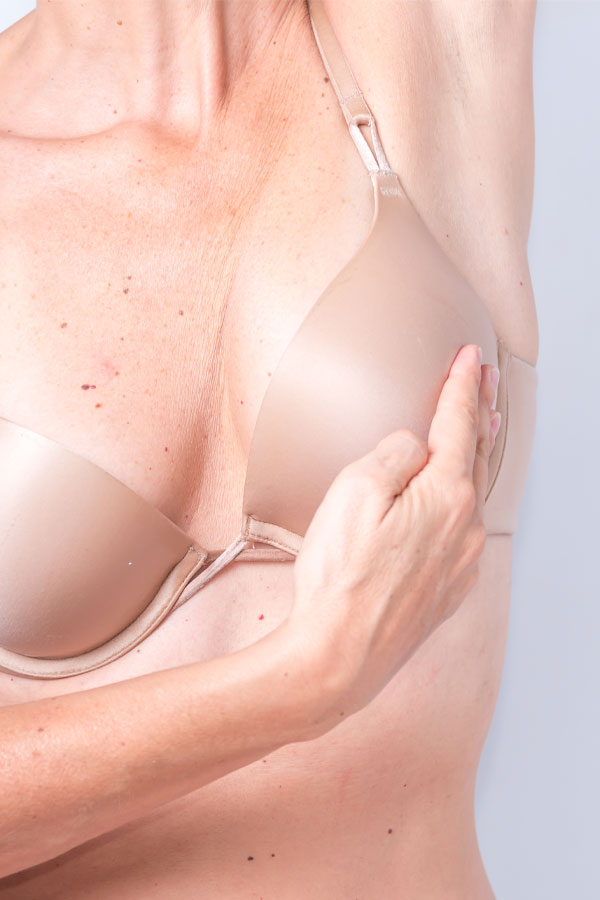
Accessory Breast Tissue Removal
What does the surgery involve?
The options for surgical management of accessory breast tissue are:
Liposuction – This is a useful technique in patients who have minimal loose skin and fatty accessory tissue with a minimal glandular component. The liposuction reduces the fat and encourages skin to retract. However, liposuction cannot remove glandular breast tissue, which is firm and fibrous. Patients with a significant amount of glandular breast tissue may be left with a prominent lump or laxity of the skin.
Glandular avulsion and liposuction - This will address both the fat deposition and breast tissue and encourage skin to tighten. The technique is performed through 2 small stab incisions in the axilla and leaves minimal scars. It is the most common technique and addresses all elements of accessory breast tissue.
Skin excision in combination with liposuction and glandular avulsion – Avoiding scars wherever possible is preferable, however, if there is residual laxity that is unlikely to retract it can be removed with a much smaller scar and less risks and complications. Liposuction is used to remove fatty tissue through several stab incisions, hidden within the areolae. These scars are almost unnoticeable. The surgery takes about 1 hour to complete under general anaesthetic, as a day case procedure.

































































What are the risks and side effects of surgery?
Having cosmetic surgery can be a very positive experience. Complications are infrequent and usually minor. However no surgery is without risk and you should be aware of any possible problems.
Scars
The surgery is normally performed through a 5mm stab incision hidden in a skin crease in the axilla, and normally settle remarkably well, so that the scars are barely perceptible. However, some patients heal with noticeable thickened, thin or stretched scars.
Bruising and swelling
This is normal and may take approximately 3 weeks to settle.
Haematoma
This is clotted blood that collects in the breast. A haematoma often occurs within 4 to 6 hours post-surgery. Any increase in swelling or pain should be reported immediately for assessment. Should the haematoma be significant, it will have to be washed out in theatre and any bleeding vessel(s) identified and cauterised. This does not normally delay your recovery or change the cosmetic result.
Infection
The risk of infection is inherent with any surgical procedure, albeit very uncommon in elective breast procedures. Antibiotics are administered during surgery and for 7 days after surgery to minimise the risks. Less than 1% of patients develop an infection post-operatively and rarely require any intervention, apart from further antibiotic treatment.
Numbness, reduced sensation or oversensitivity
A reduction in nipple sensation may occur temporarily but normally resolves in the fullness of time.
Wound healing problems
These are rare but can happen around the nipple or where the skin has been excised in select patients. These healing difficulties can range from minor problems, such as small scabs or areas of wound separation, to major issues, such as skin or nipple loss. Although very rare, this situation may require a skin graft to close the wound, meaning more surgery. Patients who have diabetes, smoke, are obese or elderly are at an increased risk of delayed healing.
Asymmetry
Remembering “they are sisters and not twins”, each breast is slightly different and will continue to be following surgery. However, if you have noticeable asymmetry before your surgery then this will be corrected as part of the surgery and will be discussed with you.
DVT/PE
Following any surgical procedure it is possible to develop a blood clot in your legs, which could potentially break off and travel to your lungs. If the blood clot is large enough, it could prove fatal.
The overall risk for cosmetic surgery is less than 1%, but in order to reduce any risks of a DVT/PE, you will be provided with special stockings to wear in bed together with a blood thinning injection, if you are not mobile or have previously had a DVT or PE.
Breastfeeding
Not all patients will be able to breastfeed after breast surgery, reduction or mastopexy. If you have further family plans and wish to breastfeed then this procedure should be delayed.
Fat necrosis
Sometimes areas of fat within the breast scar form hard lumps called fat necrosis. Usually, no specific treatment is required, and the problem settles down over a 12-month period.
Loose skin
It is possible that the skin does not retract completely, and you may be left with some loose skin. If this is something of concern, then the skin would need to be removed at a second stage.
Recurrence
It is possible for accessory breast tissue to recur. This is very uncommon, unless there is a specific factor that continues to cause glandular tissue to grow, for example certain medications or hormones. All the risks will be discussed in detail at your consultation. However, if you have further questions or concerns, do not hesitate to discuss these with me. Decisions about cosmetic surgery must never be rushed and requires personal research.
What is the estimated time for recovery, absence from work and return to usual activities?
When you get home, you should take things easy for the first week or so. Most people take a week off from work and gradually increase activity over the next few weeks. You can return to exercise at the gym after 3 weeks.




